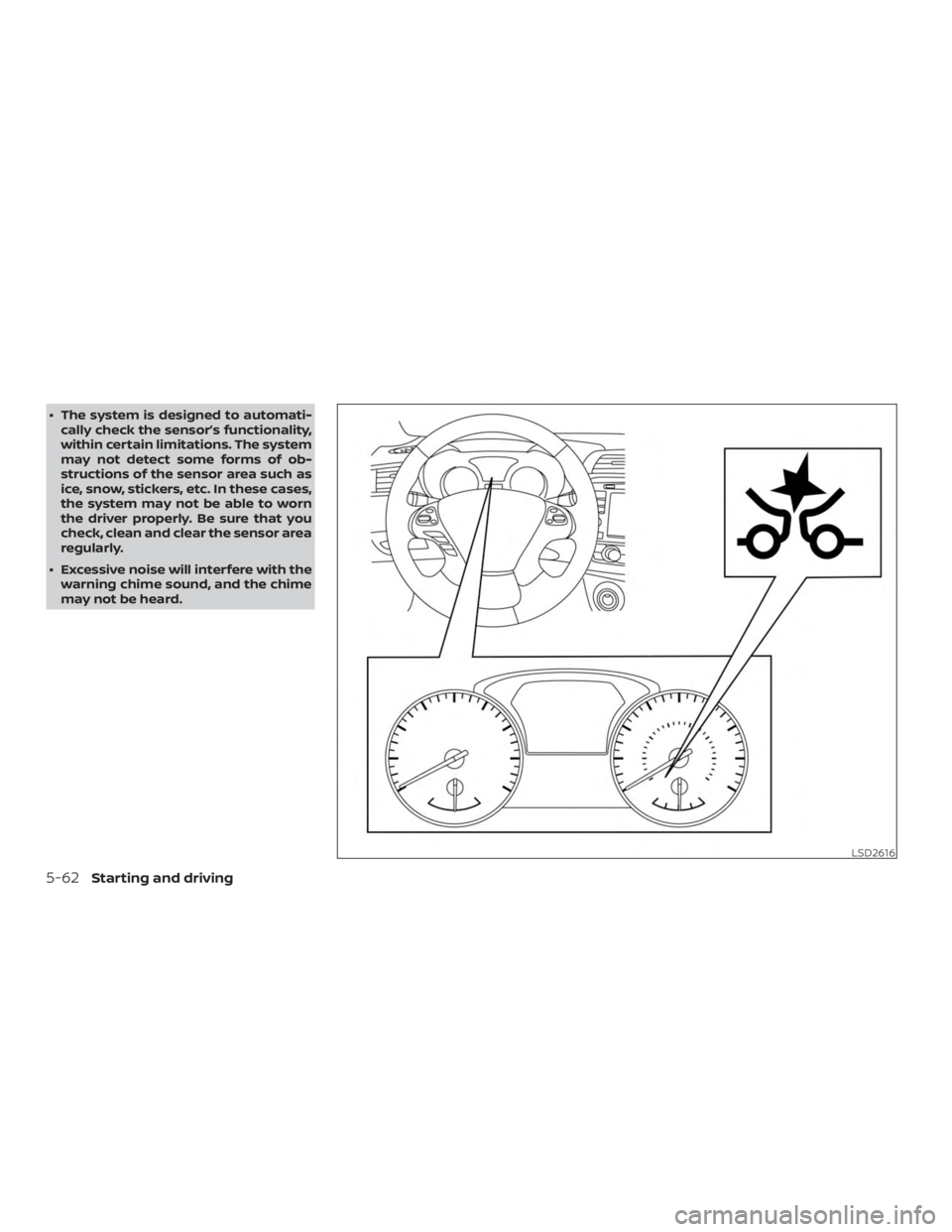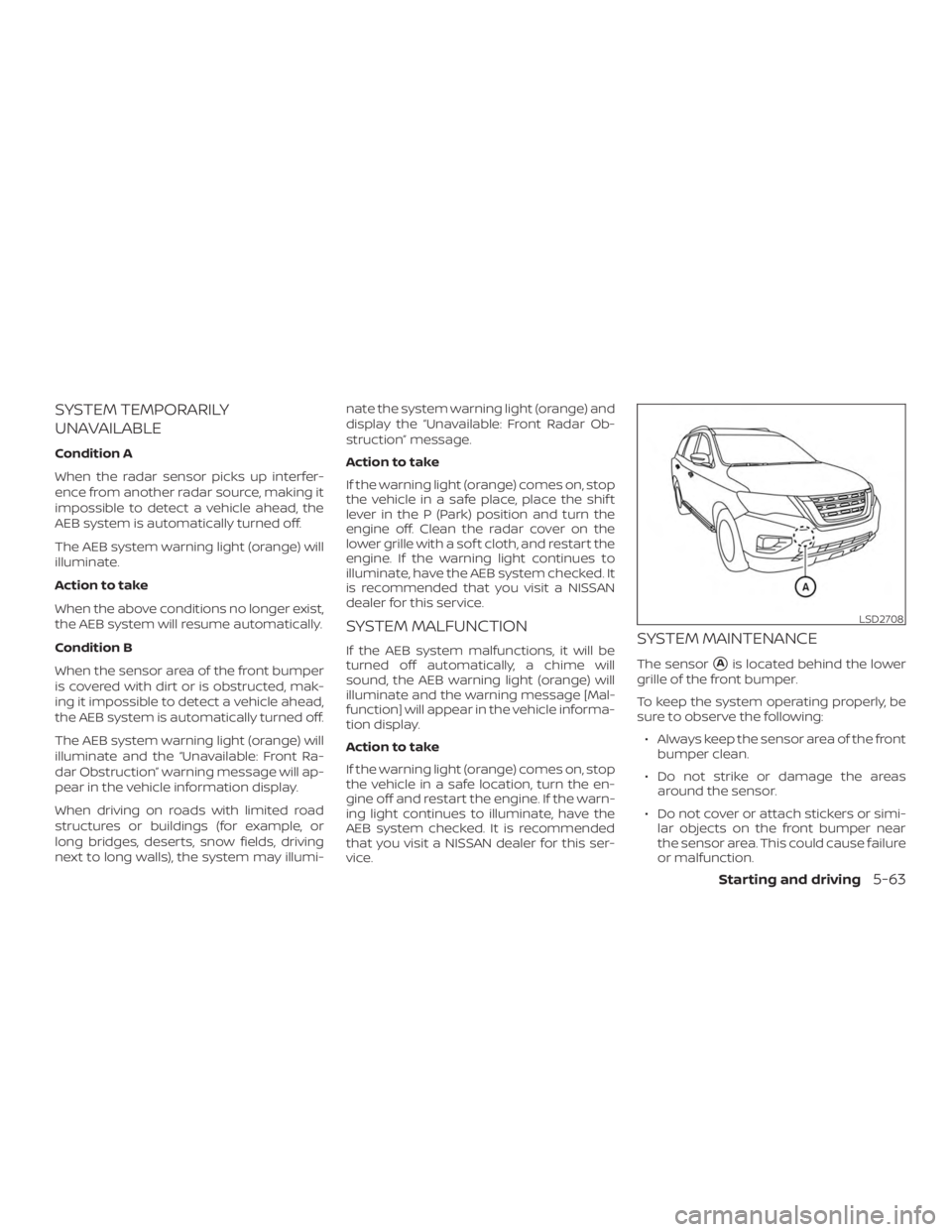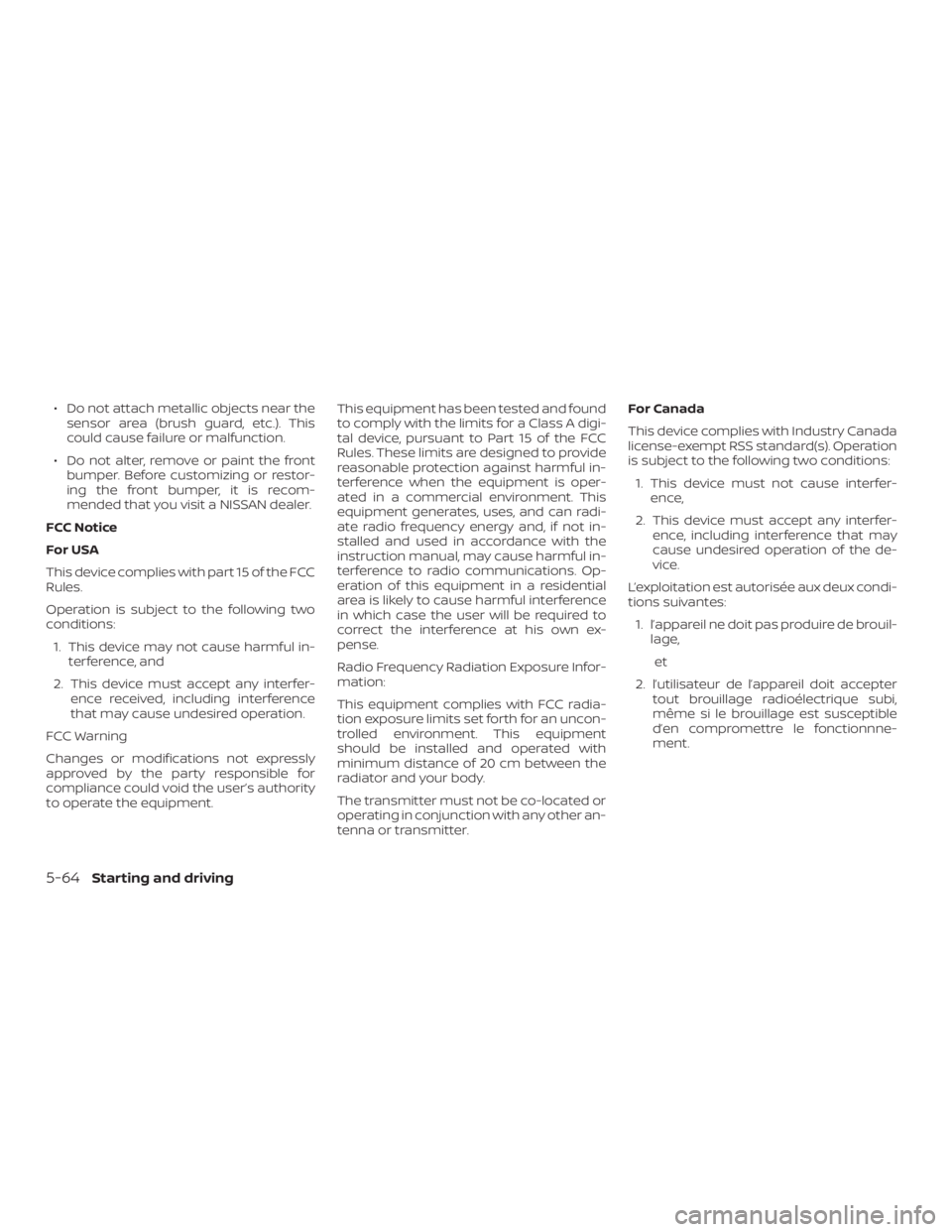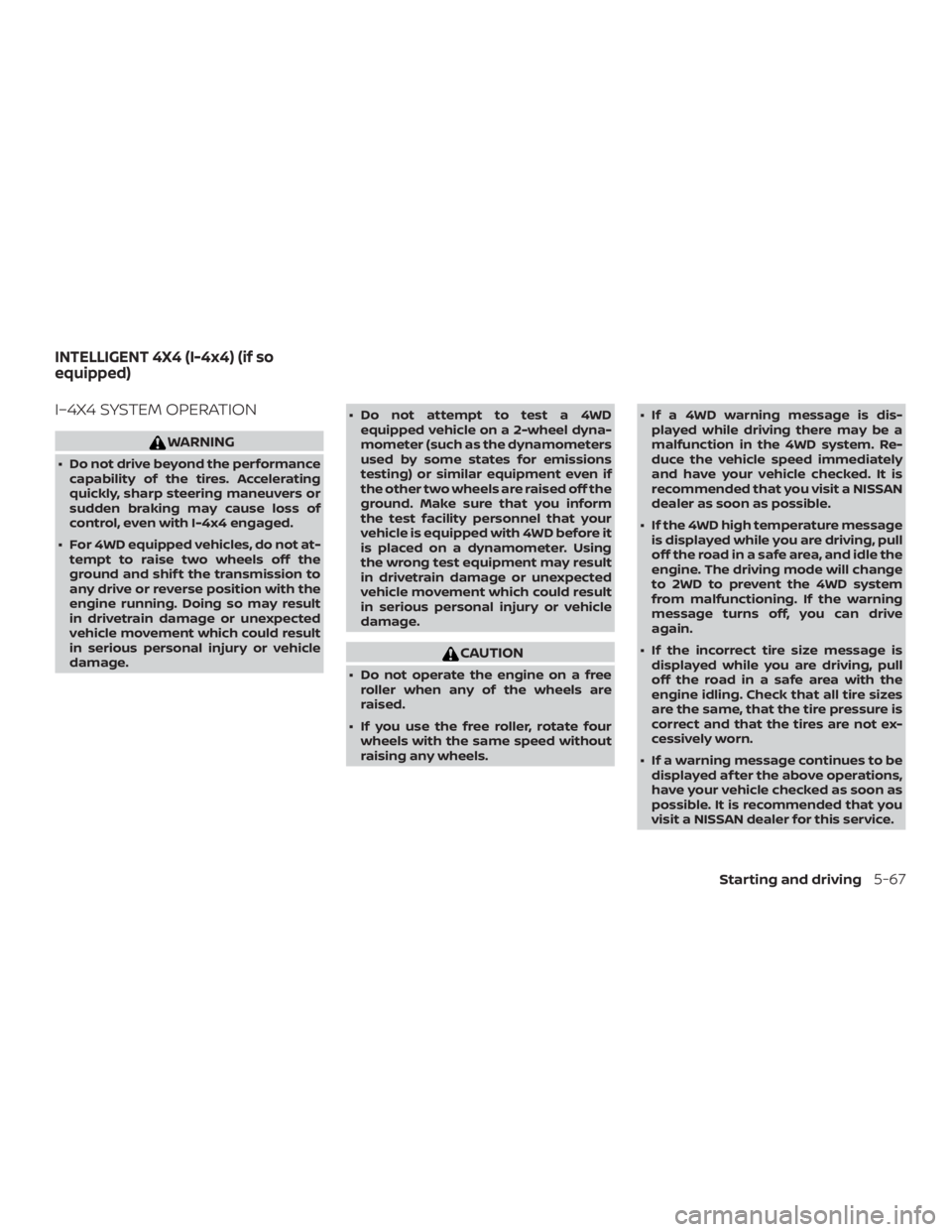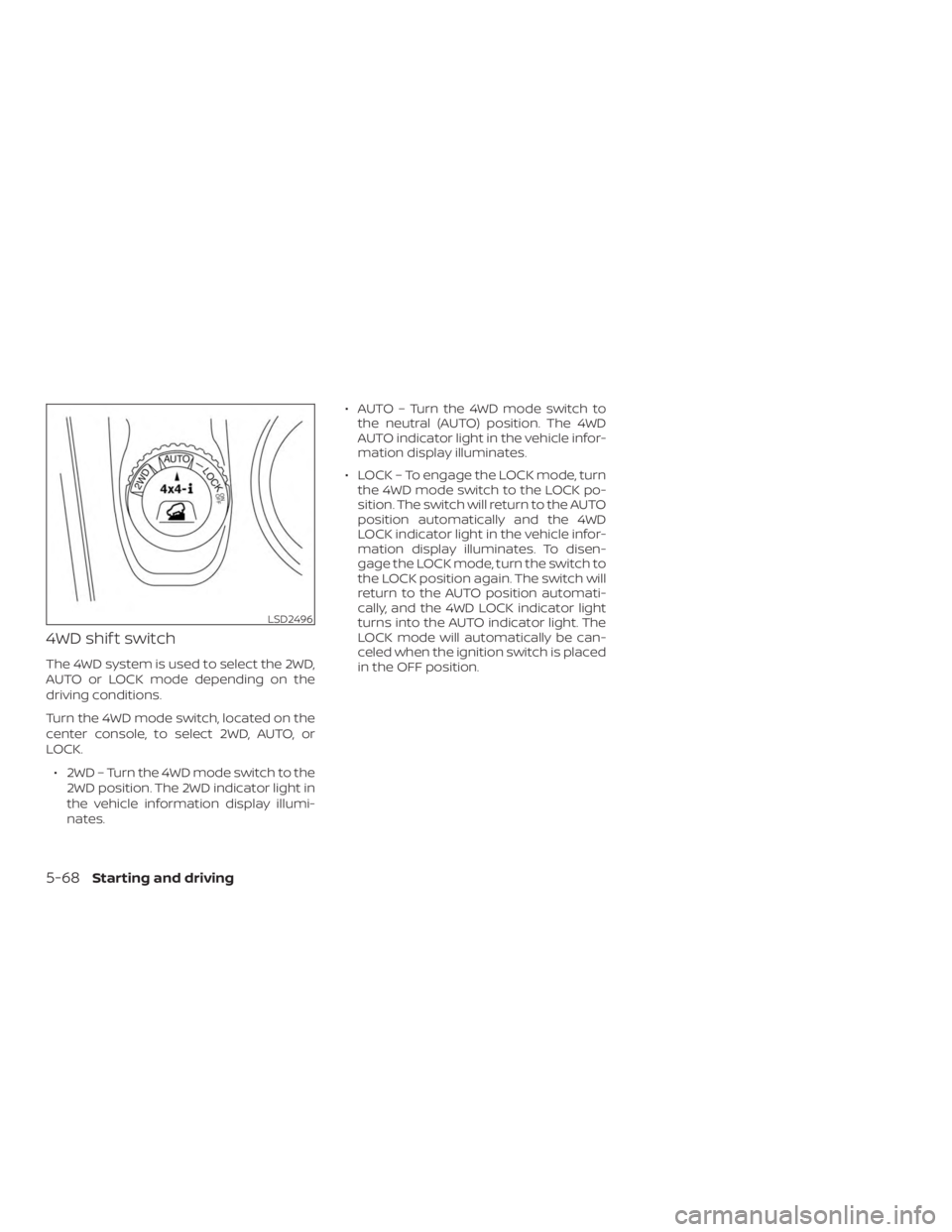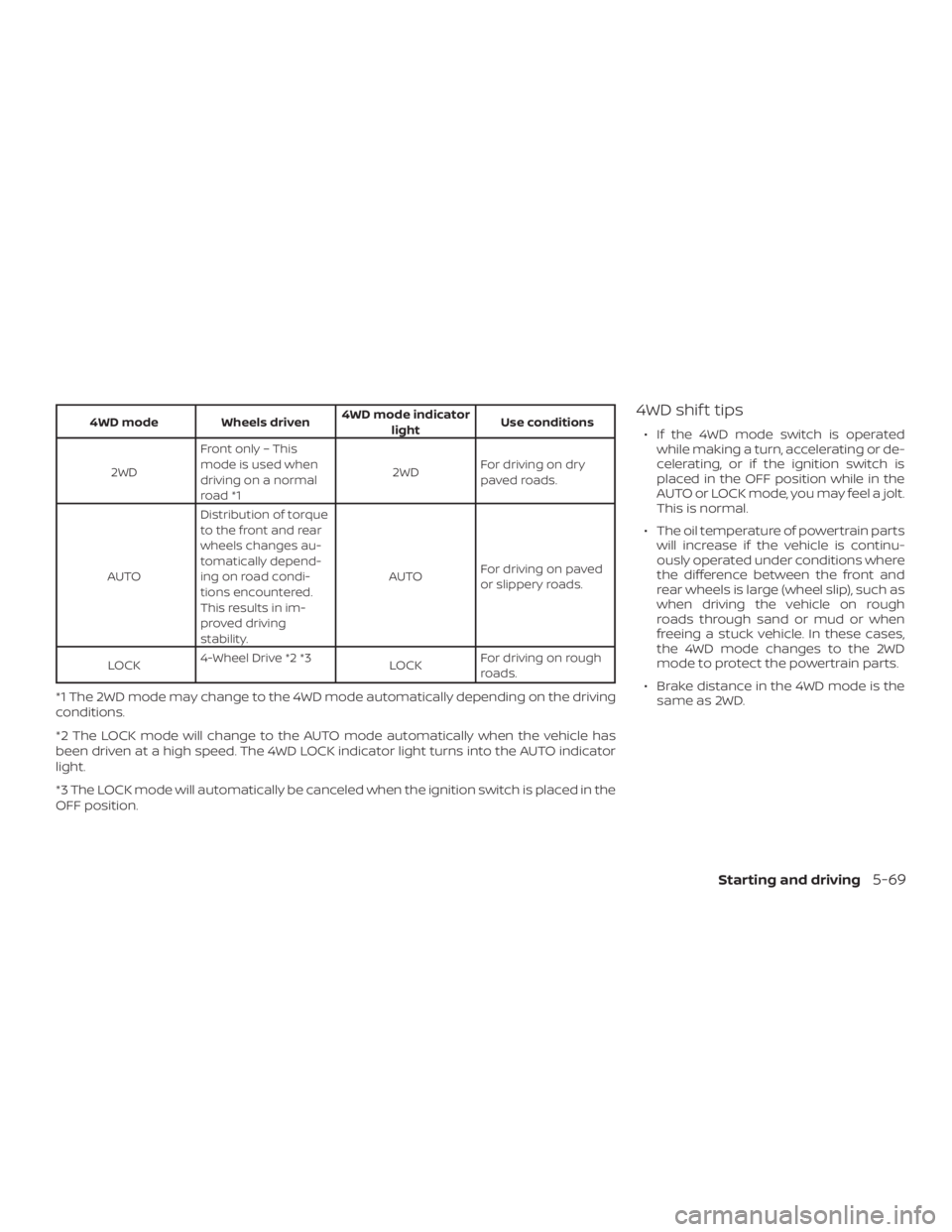NISSAN PATHFINDER PLATINUM 2018 Owners Manual
PATHFINDER PLATINUM 2018
NISSAN
NISSAN
https://www.carmanualsonline.info/img/5/56749/w960_56749-0.png
NISSAN PATHFINDER PLATINUM 2018 Owners Manual
Trending: rear view mirror, power steering, change time, gas mileage, jump start, wiper size, air conditioning
Page 331 of 474
∙ The system is designed to automati-cally check the sensor’s functionality,
within certain limitations. The system
may not detect some forms of ob-
structions of the sensor area such as
ice, snow, stickers, etc. In these cases,
the system may not be able to worn
the driver properly. Be sure that you
check, clean and clear the sensor area
regularly.
∙ Excessive noise will interfere with the warning chime sound, and the chime
may not be heard.
Page 332 of 474
Page 333 of 474
Page 334 of 474
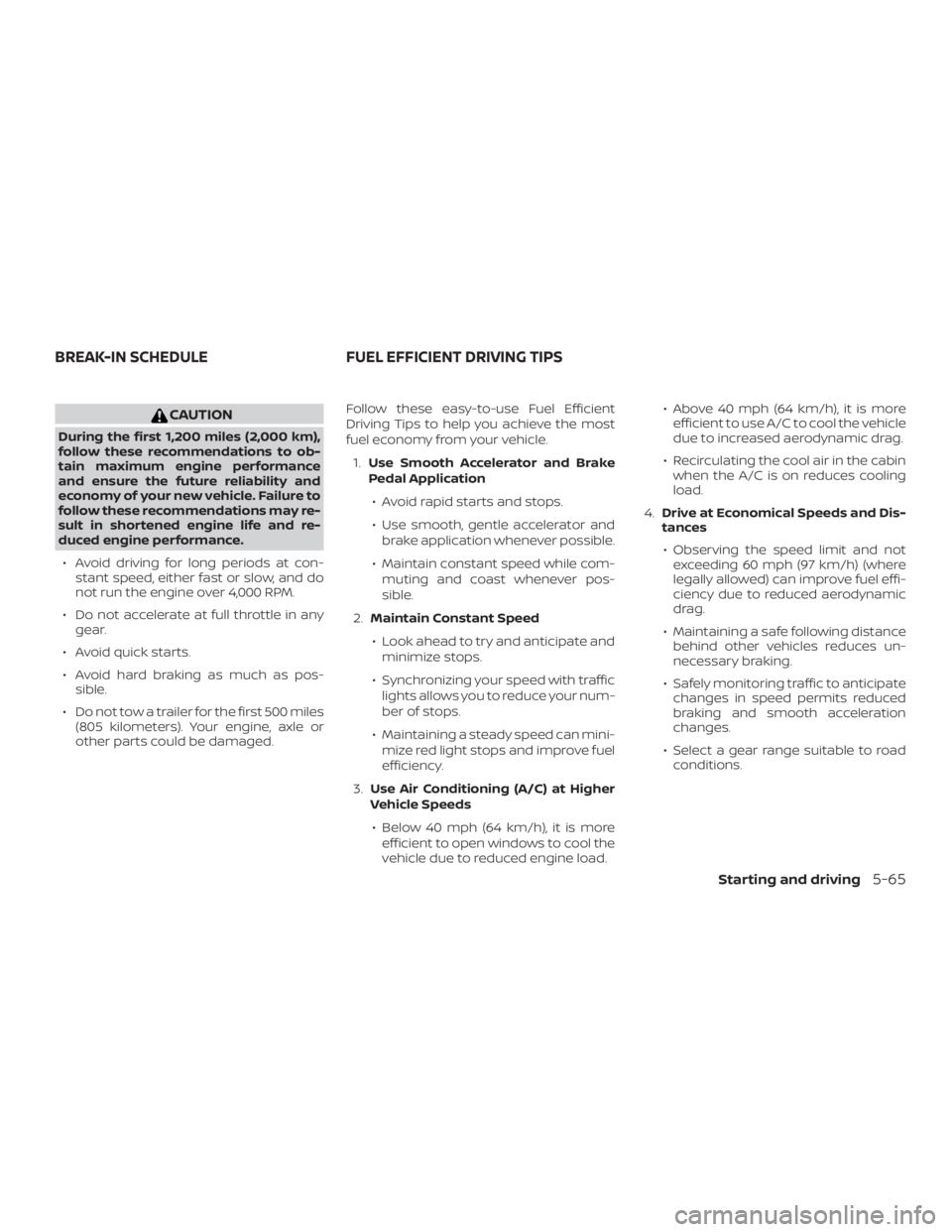
CAUTION
During the first 1,200 miles (2,000 km),
follow these recommendations to ob-
tain maximum engine performance
and ensure the future reliability and
economy of your new vehicle. Failure to
follow these recommendations may re-
sult in shortened engine life and re-
duced engine performance.∙ Avoid driving for long periods at con- stant speed, either fast or slow, and do
not run the engine over 4,000 RPM.
∙ Do not accelerate at full throttle in any gear.
∙ Avoid quick starts.
∙ Avoid hard braking as much as pos- sible.
∙ Do not tow a trailer for the first 500 miles (805 kilometers). Your engine, axle or
other parts could be damaged. Follow these easy-to-use Fuel Efficient
Driving Tips to help you achieve the most
fuel economy from your vehicle.
1. Use Smooth Accelerator and Brake
Pedal Application
∙ Avoid rapid starts and stops.
∙ Use smooth, gentle accelerator and brake application whenever possible.
∙ Maintain constant speed while com- muting and coast whenever pos-
sible.
2. Maintain Constant Speed
∙ Look ahead to try and anticipate and minimize stops.
∙ Synchronizing your speed with traffic lights allows you to reduce your num-
ber of stops.
∙ Maintaining a steady speed can mini- mize red light stops and improve fuel
efficiency.
3. Use Air Conditioning (A/C) at Higher
Vehicle Speeds
∙ Below 40 mph (64 km/h), it is more efficient to open windows to cool the
vehicle due to reduced engine load. ∙ Above 40 mph (64 km/h), it is more
efficient to use A/C to cool the vehicle
due to increased aerodynamic drag.
∙ Recirculating the cool air in the cabin when the A/C is on reduces cooling
load.
4. Drive at Economical Speeds and Dis-
tances
∙ Observing the speed limit and not exceeding 60 mph (97 km/h) (where
legally allowed) can improve fuel effi-
ciency due to reduced aerodynamic
drag.
∙ Maintaining a safe following distance behind other vehicles reduces un-
necessary braking.
∙ Safely monitoring traffic to anticipate changes in speed permits reduced
braking and smooth acceleration
changes.
∙ Select a gear range suitable to road conditions.
BREAK-IN SCHEDULE FUEL EFFICIENT DRIVING TIPS
Starting and driving5-65
Page 335 of 474
Page 336 of 474
Page 337 of 474
Page 338 of 474
Page 339 of 474
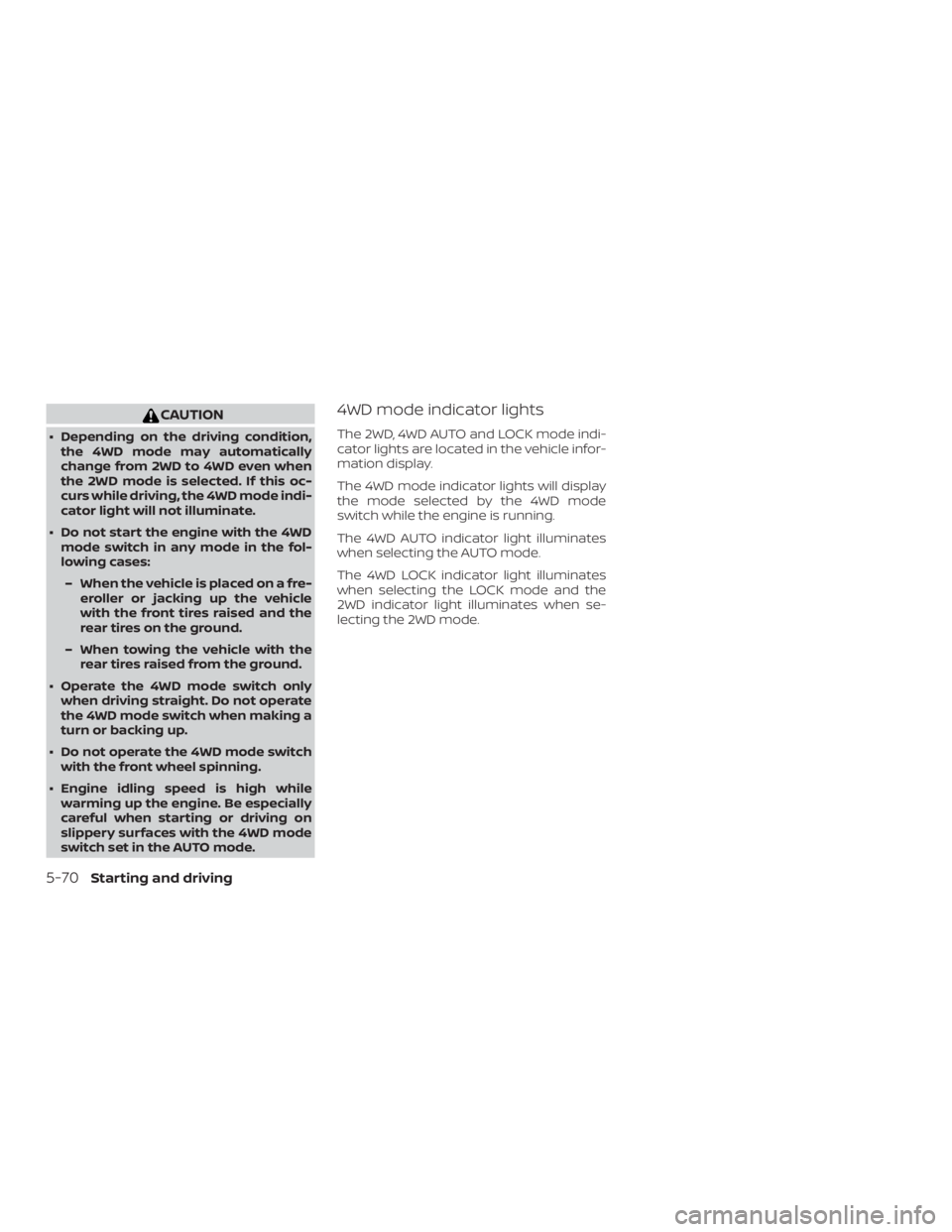
CAUTION
∙ Depending on the driving condition,the 4WD mode may automatically
change from 2WD to 4WD even when
the 2WD mode is selected. If this oc-
curs while driving, the 4WD mode indi-
cator light will not illuminate.
∙ Do not start the engine with the 4WD mode switch in any mode in the fol-
lowing cases:
– When the vehicle is placed on a fre- eroller or jacking up the vehicle
with the front tires raised and the
rear tires on the ground.
– When towing the vehicle with the rear tires raised from the ground.
∙ Operate the 4WD mode switch only when driving straight. Do not operate
the 4WD mode switch when making a
turn or backing up.
∙ Do not operate the 4WD mode switch with the front wheel spinning.
∙ Engine idling speed is high while warming up the engine. Be especially
careful when starting or driving on
slippery surfaces with the 4WD mode
switch set in the AUTO mode.
4WD mode indicator lights
The 2WD, 4WD AUTO and LOCK mode indi-
cator lights are located in the vehicle infor-
mation display.
The 4WD mode indicator lights will display
the mode selected by the 4WD mode
switch while the engine is running.
The 4WD AUTO indicator light illuminates
when selecting the AUTO mode.
The 4WD LOCK indicator light illuminates
when selecting the LOCK mode and the
2WD indicator light illuminates when se-
lecting the 2WD mode.
5-70Starting and driving
Page 340 of 474

WARNING
∙ Do not stop or park the vehicle overflammable materials such as dry
grass, waste paper or rags. They may
ignite and cause a fire. ∙ Safe parking procedures require that
both the parking brake be set and the
transmission placed into P (Park). Fail-
ure to do so could cause the vehicle to
move unexpectedly or roll away and
result in an accident. Make sure the
shif t lever has been pushed as far for-
ward as it can go and cannot be
moved without depressing the foot
brake pedal.
∙ Never leave the engine running while the vehicle is unattended. ∙ To help avoid risk of injury or death
through unintended operation of the
vehicle and/or its systems, do not
leave children, people who require the
assistance of others or pets unat-
tended in your vehicle. Additionally,
the temperature inside a closed ve-
hicle on a warm day can quickly be-
come high enough to cause a signifi-
cant risk of injury or death to people
and pets.
1. Firmly apply the parking brake.
2. Move the shif t lever to the P (Park) po- sition.
3. To help prevent the vehicle from rolling into traffic when parked on an incline, it
is a good practice to turn the wheels as
illustrated.
∙ HEADED DOWNHILL WITH CURB
�A:
Turn the wheels into the curb and
move the vehicle forward until the curb
side wheel gently touches the curb.
∙ HEADED UPHILL WITH CURB
�B:
Turn the wheels away from the curb
and move the vehicle back until the
curb side wheel gently touches the
curb.
Trending: hood release, low beam, fuel cap release, stop start, brake sensor, lock, ECO mode
